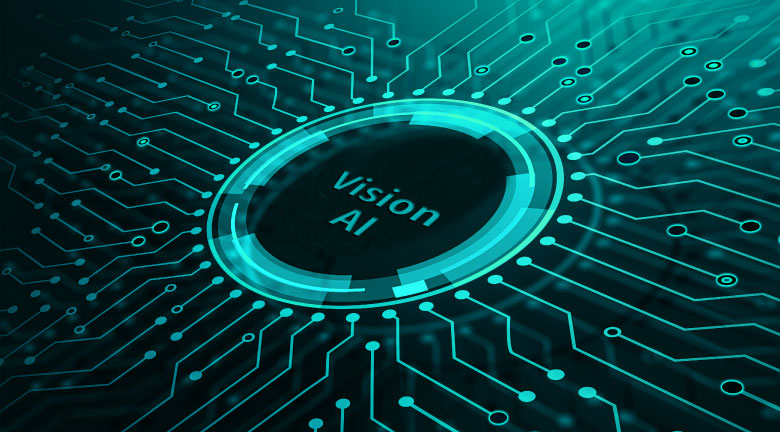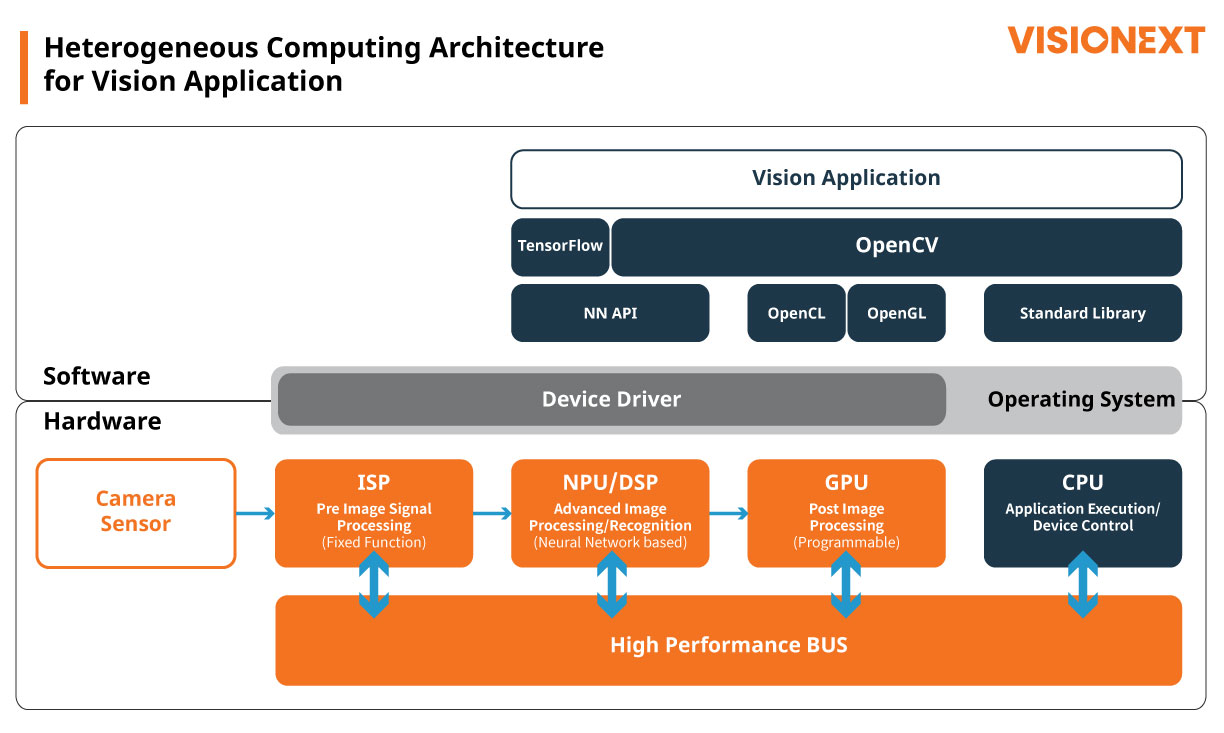- News Center VisioNexT's 3 core technologies: ② Vision AI 2023-04-27 1,013 hits
-
Vision AIIntroducing VsioNexT's 3 Core Technologies
 Vision AI solutions are becoming increasingly prevalent in industries as diverse as security, healthcare, and automotive. These solutions use both computer vision and artificial intelligence (AI) to analyze and interpret visual data from cameras and sensors to detect objects, recognize faces, and more. VisioNexT develops Vision AI SoCs to perform these tasks better with lower latency by using heterogeneous computing architecture that utilizes more than one type of processor or core.
Vision AI solutions are becoming increasingly prevalent in industries as diverse as security, healthcare, and automotive. These solutions use both computer vision and artificial intelligence (AI) to analyze and interpret visual data from cameras and sensors to detect objects, recognize faces, and more. VisioNexT develops Vision AI SoCs to perform these tasks better with lower latency by using heterogeneous computing architecture that utilizes more than one type of processor or core.Heterogeneous computing architecture connects different types of processing units – CPU (Central Processing Unit), GPU (Graphic Processing Unit), DSP (Digital Signal Processor) and more – on a single chip via high-performance bus to process data and algorithms faster. In addition, by offloading certain tasks to specialized processing units, such as image processing to ISP (Image Signal Processor) or deep learning to NPU (Neural Processing Unit), heterogeneous computing architecture can reduce power consumption and improve performance.

Overall, heterogeneous computing architecture provides a common interface for different types of processors to communicate with each other, and an optimized software framework enables hardware & software to seamlessly work together. Designed with heterogeneous computing in mind, the Vision AI SoCs make better use of hardware resources to optimize performance and energy efficiency. VisioNexT will further strengthen its design expertise to develop SoCs that enable AI applications to accurately process large amounts of data in real-time.
-
- Previous
- VisioNexT's 3 core technologies: ① Powerful ISP 2023-03-27 751 hits
-
- next
- VisioNexT's 3 core technologies: ③ Low Power 2023-06-01 626 hits